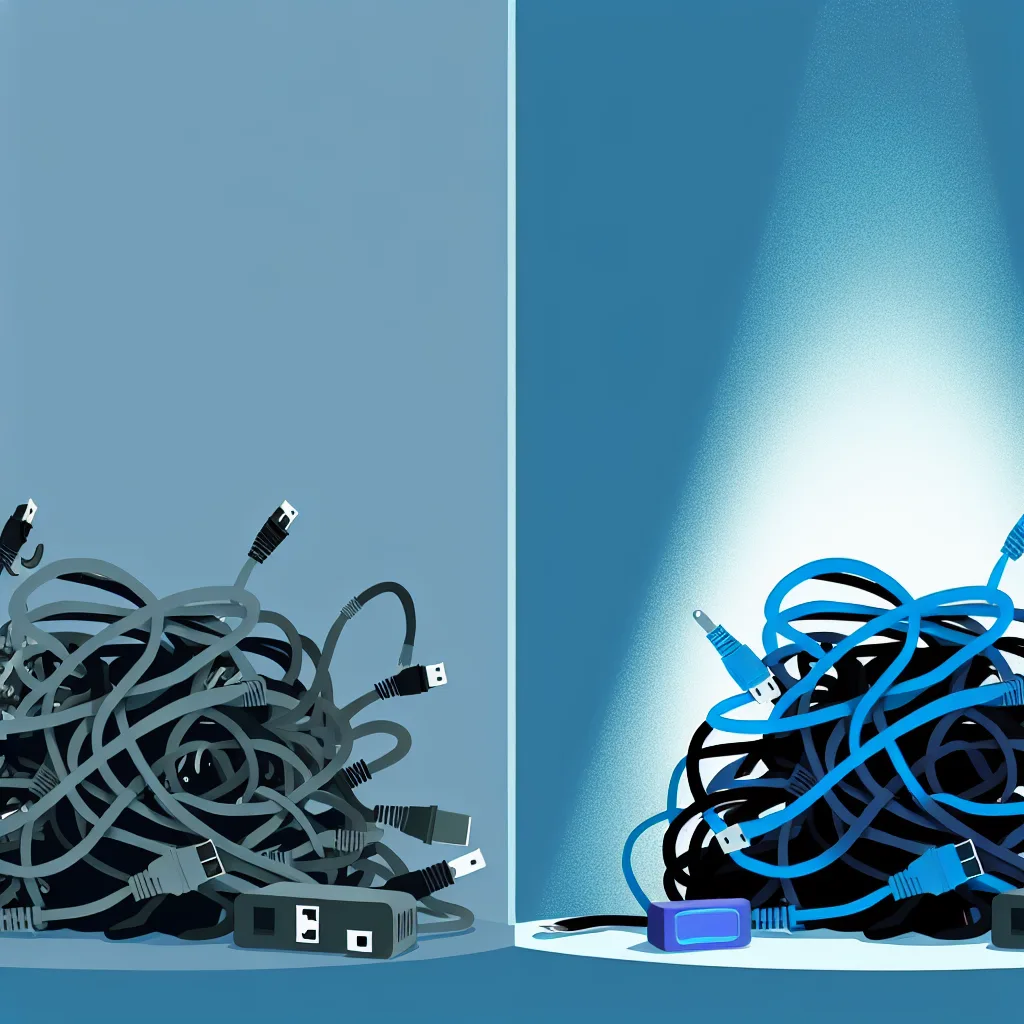Your old smart home isn’t a lost cause. Here’s how to upgrade that ancient system without a complete, wall-destroying rewire.
So, picture this. You buy a house, and it comes with a secret. Tucked away under the stairs or in a utility closet is a strange metal box with a mess of wires. You discover that your light switches aren’t normal switches. They’re keypads, and they’re all wired back to this central brain. You’ve inherited a powerful, commercial-grade, and completely outdated home automation system.
This exact thing happened to a homeowner I heard about. Ten years ago, he bought his house from a commercial electrician who had used the place as a demo for his business. The result? A home running on a system from the early 2000s, programmed with an ancient Windows laptop. At first, it’s a quirky novelty. But the charm fades quickly when you realize a switch in the living room controls the lights in your kid’s bedroom upstairs. You’re forced to dust off the old laptop, dive into a clunky interface, and learn to reprogram your own house just to have things make sense.
If you’re in a similar boat, you’re probably asking the same question: What do I do when this old beast finally gives up? Am I looking at a full, wall-destroying rewire? Or is there a smarter way to upgrade?
Understanding Your Outdated Home Automation System
First, let’s clarify what we’re talking about. This isn’t about swapping out a few Wi-Fi smart plugs. These older, centralized systems are a different breed entirely. They often use a star-wiring configuration, where low-voltage cables for switches and high-voltage lines for lights and outlets all run back to a central cabinet full of relays.
The system in the story was a Teletask Domotics Micros, but similar systems were made by companies like Legrand, Crestron, or Control4. The key features are:
- Centralized Relays: Instead of a switch on the wall directly controlling a light, it sends a signal to a relay in a central panel, which then turns the light on or off.
- Low-Voltage Keypads: The “switches” on your walls are often just keypads that send a small data signal.
- A Central “Brain”: A main controller unit runs the logic for the entire house.
The good news? The wiring itself is often high-quality and robust. The bad news? The “brain” and the software are relics from a bygone era.
The Problem with an Old Smart Home System
Living with an outdated home automation system is like driving a classic car. It’s cool, and it was top-of-the-line in its day, but it comes with headaches. You’re constantly worried about the day you can’t get a spare part. The “check engine” light is that ancient laptop you keep around for emergencies.
You can’t just go to the store and buy a cool new smart switch, because your walls aren’t wired for it. You’re locked out of the modern ecosystem of Alexa, Google Home, and Apple HomeKit. Your smart home is powerful, but it’s also incredibly dumb by today’s standards. The fear of the main controller failing isn’t a matter of if, but when. And when it does, will your lights still work?
Upgrade Paths for Your Outdated Home Automation
So, are you stuck? Absolutely not. While a full rewire is an option, it’s the most extreme and expensive one. Thankfully, technology has advanced, and you have much better, more practical choices that can leverage the high-quality wiring you already have.
1. The “Brain Transplant” Approach
This is often the sweet spot. The logic is simple: keep the existing “body” (the wiring and relays) and replace the “brain” (the central controller). You can install a modern home automation controller that is designed to work with centralized relay systems. Companies like Loxone specialize in this, offering powerful miniservers that can take over control of your existing relays.
This approach lets you:
* Keep your existing, reliable wiring.
* Replace the wall keypads with modern, sleek alternatives.
* Gain access to a modern app, voice control, and integration with thousands of other smart devices.
* Build a hybrid system where you can add wireless smart devices alongside your wired ones.
2. The DIY Route with Home Assistant
If you’re technically inclined (and the “rocket scientist” in the original story certainly was), you could go a step further. You could use a platform like Home Assistant as your new central brain. This would involve pairing it with hardware that can control your existing relays, like PLC (Programmable Logic Controller) devices or specialty relay boards.
This path offers ultimate flexibility and power, but it’s a significant project. It’s for the hobbyist who loves to tinker. You’re not just using a smart home; you’re building one from the ground up, tailored exactly to your needs.
3. The Specialist Update
Your system’s original manufacturer might still be around, or there may be specialist installers who still service them. They might be able to upgrade your controller to a newer model from the same brand. This is less disruptive but might keep you locked into a single proprietary ecosystem. It’s a solid choice if you liked how the old system worked but just want a more modern version of it.
You’re not trapped. That intimidating box of wires isn’t a curse; it’s an opportunity. The original builder gave you a home with a robust, centralized nervous system. The brain may be aging, but the bones are good. By performing a “brain transplant,” you can bring your home into the modern age without tearing it apart. The project might be a fun challenge, but the result will be a smart home that’s truly yours, blending the best of old-school reliability with new-school intelligence.
